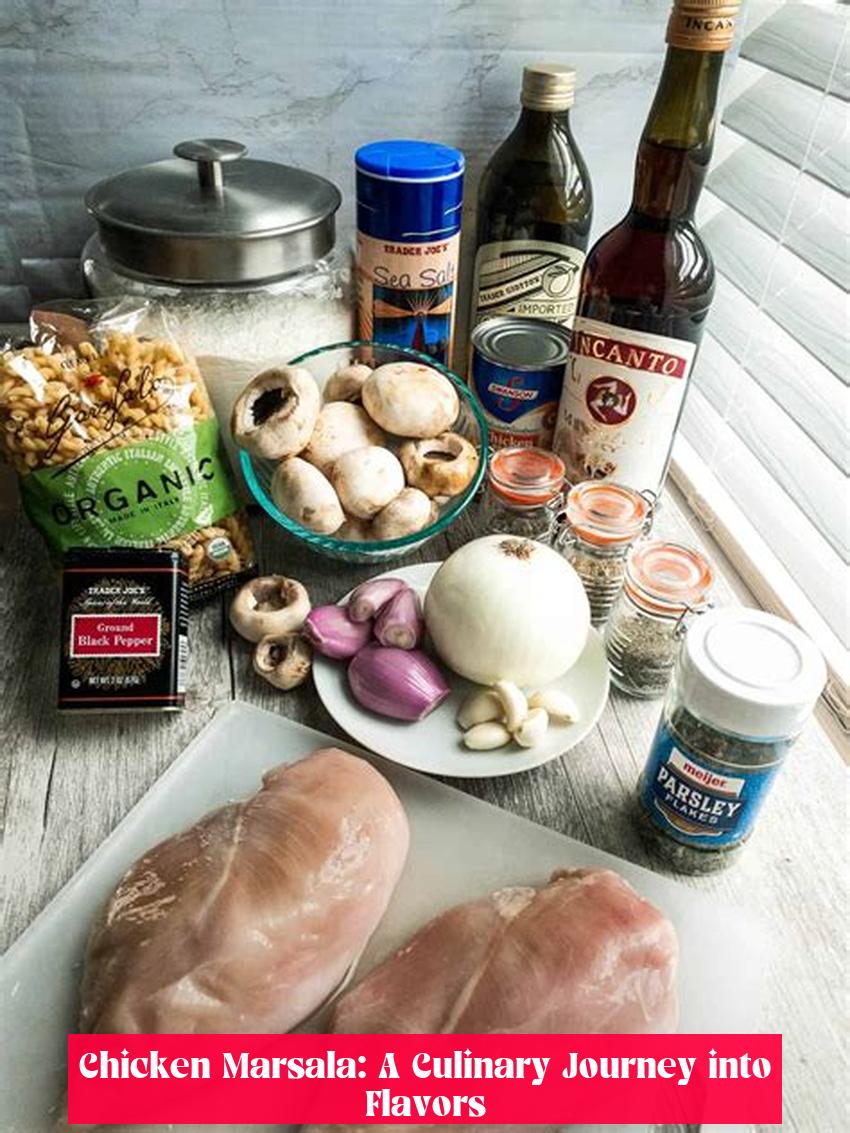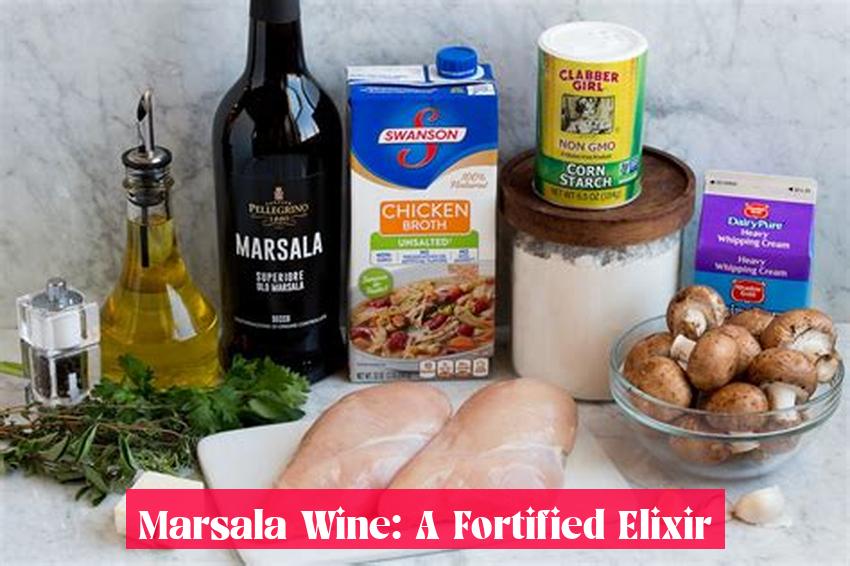Indulge in a tantalizing journey of flavors as we uncover the savory secrets of Chicken Marsala! From the rich essence of its velvety sauce to the fortified elixir of Marsala wine, we’re taking a delectable dive into the heart of this culinary icon. Join us as we explore the origins, accompanying sides, and the irresistible allure of this timeless dish. Get ready to tantalize your taste buds and elevate your culinary prowess with our culinary odyssey into the world of Chicken Marsala!
Key Takeaways
- Key Takeaway 1: Chicken Marsala sauce is made of Marsala wine, chicken broth, parsley, garlic, shallot, and mushrooms.
- Key Takeaway 2: Marsala wine is made with local white grape varietals including Grillo, Inzolia, Catarratto, and Damaschino, and is supplemented with a distilled spirit, usually brandy.
- Key Takeaway 3: Chicken Marsala is traditionally paired with starchy sides like creamy garlic mashed potatoes or Italian pasta such as fettuccine, along with vegetables like steamed asparagus or roasted Brussels sprouts.
- Key Takeaway 4: The dish is named after Marsala, a city in Sicily, known for its fortified wine with a deep, intense flavor, which is used in the recipe.
- Key Takeaway 5: The ingredients for Chicken Marsala typically include boneless skinless chicken breasts, flour, garlic cloves, shallot, mushrooms, and Marsala wine for the sauce.
Table of Contents
Chicken Marsala: A Culinary Journey into Flavors

Indulge in the tantalizing flavors of Chicken Marsala, a delectable dish that has captivated palates for centuries. Originating from the vibrant streets of Marsala, Sicily, this culinary masterpiece blends the richness of fortified wine with the savory essence of chicken, mushrooms, and herbs. Join us on a gastronomic adventure as we delve into the ingredients and techniques that make Chicken Marsala an unforgettable culinary experience.
Unveiling the Essence of Chicken Marsala Sauce
The heart of Chicken Marsala lies in its exquisite sauce, a symphony of flavors that dances upon the palate. Marsala wine, the namesake ingredient, imparts a deep, nutty flavor that complements the savory notes of chicken broth. Parsley, with its vibrant green hue and herbaceous aroma, adds a touch of freshness, while garlic and shallots provide a pungent base that anchors the sauce’s complexity. Mushrooms, sautéed to perfection, contribute an earthy richness that harmonizes seamlessly with the other ingredients.
For you, Wyler’s Mrs. Grass Extra Noodle Soup: A Hearty Classic for Modern Palates
Read Also : Unveiling the Best Chicken Marsala Ingredients: A Culinary Journey from Sicily to Your Plate
Marsala Wine: A Fortified Elixir

Marsala wine, the star of the sauce, is a fortified wine produced in the region of Marsala, Sicily. This unique beverage is crafted from local white grape varietals, such as Grillo, Inzolia, Catarratto, and Damaschino. During the winemaking process, a distilled spirit, typically brandy, is added, enhancing the wine’s alcohol content and imparting a distinctive flavor profile. Marsala wines exhibit a range of sweetness levels, from dry to sweet, offering versatility in culinary applications.
Accompanying Sides: A Symphony of Flavors
To complement the richness of Chicken Marsala, a variety of side dishes can elevate the dining experience. Creamy Garlic Mashed Potatoes, with their velvety texture and garlicky aroma, provide a comforting base that absorbs the flavorful sauce. Fettuccine, a classic Italian pasta, offers a delicate canvas for the sauce to coat, creating a harmonious union of flavors. Steamed asparagus, with its vibrant green spears and delicate crunch, adds a touch of freshness and color to the plate. Roasted Brussels sprouts, caramelized to perfection, offer a sweet and savory counterpoint to the savory chicken and sauce.
The Origins of a Culinary Icon: Chicken Marsala
The origins of Chicken Marsala can be traced back to the city of Marsala, Sicily. Marsala wine, renowned for its fortified nature and intense flavor, became a staple ingredient in local cuisine. Over time, chefs began experimenting with the wine, combining it with chicken, mushrooms, and herbs to create a dish that would become synonymous with the region. The name “Chicken Marsala” pays homage to the city that gave birth to this culinary masterpiece.
Q: What are the key ingredients in Chicken Marsala sauce?
A: The sauce for Chicken Marsala typically includes Marsala wine, chicken broth, parsley, garlic, shallots, and mushrooms, creating a symphony of flavors that complement the dish.
Q: What is Marsala wine made from?
A: Marsala wine is crafted from local white grape varietals such as Grillo, Inzolia, Catarratto, and Damaschino, and is fortified with a distilled spirit, usually brandy, which enhances its alcohol content and imparts a distinctive flavor profile.
Q: What are some traditional side dishes to accompany Chicken Marsala?
A: Traditional side dishes to accompany Chicken Marsala include creamy garlic mashed potatoes, Italian pasta such as fettuccine, and vegetables like steamed asparagus or roasted Brussels sprouts, all of which elevate the dining experience with a symphony of flavors.
Q: What is the significance of Marsala in the dish Chicken Marsala?
A: The dish is named after Marsala, a city in Sicily known for its fortified wine with a deep, intense flavor, which is a key ingredient in the recipe, imparting its unique nutty taste to the dish.
Q: What are the main ingredients for Chicken Marsala?
A: The main ingredients for Chicken Marsala typically include boneless skinless chicken breasts, flour, garlic cloves, shallots, mushrooms, and Marsala wine for the sauce, creating a delectable culinary masterpiece.
Q: What are the components of the Marsala sauce for Chicken Marsala?
A: The Marsala sauce for Chicken Marsala consists of chicken broth, beef bouillon cube, heavy cream, Worcestershire sauce, onion powder, and Marsala wine, which together create a rich and flavorful accompaniment to the dish.
Q: What makes Marsala wine versatile in culinary applications?
A: Marsala wines exhibit a range of sweetness levels, from dry to sweet, offering versatility in culinary applications and allowing for a variety of flavor profiles to be achieved in dishes like Chicken Marsala.















